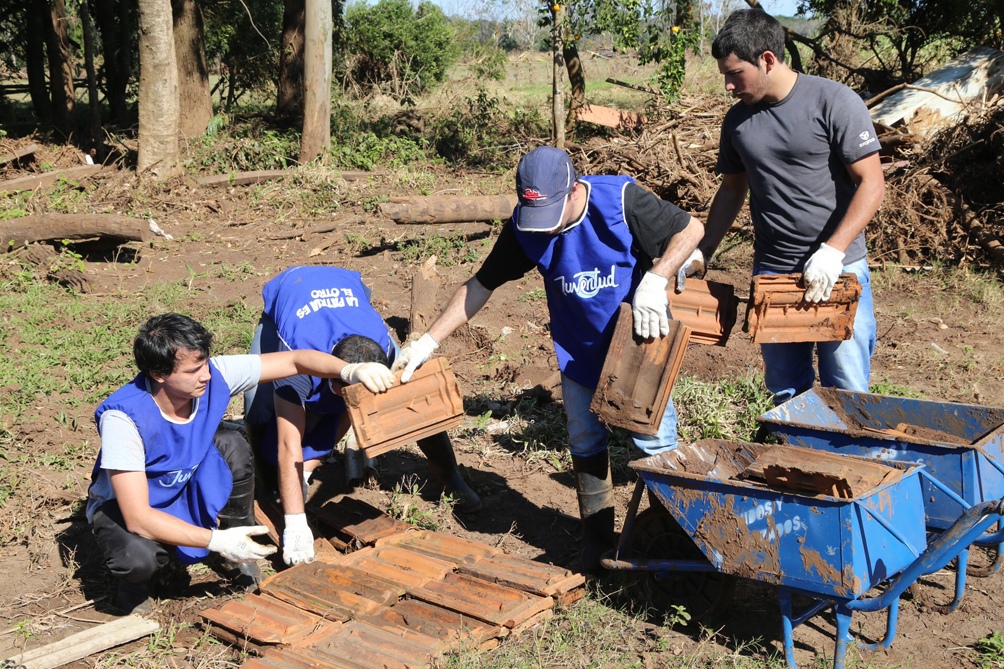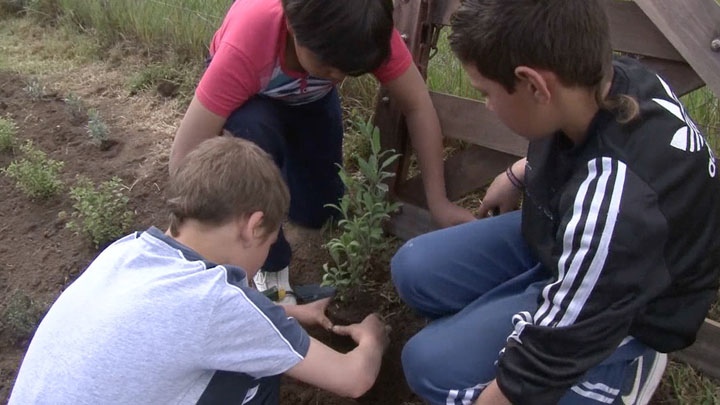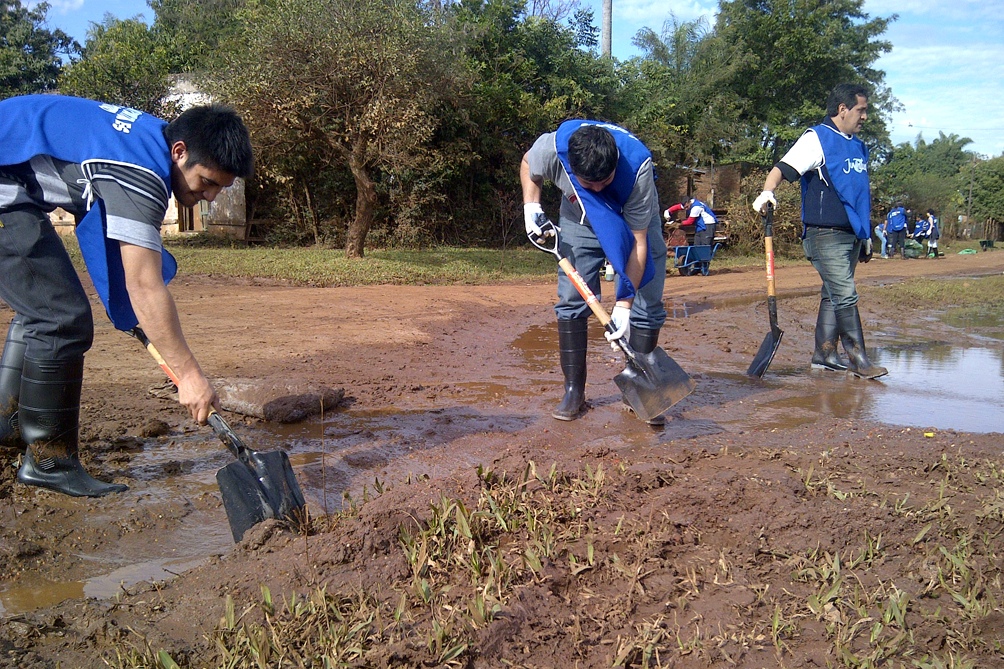 These are spaces created according to the interests of each neighborhood.
These are spaces created according to the interests of each neighborhood.
Vegetable gardens, training in trades, environmental work, care and activities for children, production with local raw materials, counseling in cases of gender violence and people with disabilities, health care and even hairdressing and toy making courses are some of the the proposals offered by the 855 Community Inclusion Centers (CIC) scattered throughout the country.
These are spaces created according to the interests of each neighborhood: residents and municipal and provincial leaders discuss, design and implement “activities for human development, according to local demands and needs”, under the “Participate in Community” program. ” of the Undersecretariat of Human Development of the Ministry of Social Development of the Nation.
Care policies (gender, children and adolescents) and labor inclusion (training and strengthening of productive projects, ventures, community gardens and social economy) are the priority interest in the territories, according to a survey carried out days ago by the Undersecretariat in the 855 Centers of the country.
As a balance after 40 years of democracy, from the first center created in Río Gallegos, Santa Cruz, in 1987, these social policies grew in 2004 at the hands of the then Minister of Social Development, Alicia Kirchner
With an imprint of “recovery of rights, generation of work and community participation”, civil society is planning local policies through “participation, articulation and management” tables, Laura Berardo, Undersecretary of Human Development, explained to Télam.
It is a way of “collectively thinking about what the territory needs”, “resignifying” citizen participation and turning it into a “reference of the State in the neighborhoods”, something essential -especially- in points far from the large urban centers of the country.
It is a new perspective on public policies, in which “the community cannot be a mere recipient of programs,” said the official.
As a balance after 40 years of democracy, from the first center created in Río Gallegos, Santa Cruz, in 1987, these social policies grew in 2004 at the hands of the then Minister of Social Development, Alicia Kirchner, and showed their peak of territoriality in 2015, under the management of Cristina Fernández de Kirchner, when the number of 847 community spaces was reached in most of the provinces.
 Care policies (genders, children and adolescents) and labor inclusion are the main focuses of attention.
Care policies (genders, children and adolescents) and labor inclusion are the main focuses of attention.
From 2020 to the present -after the Government of Mauricio Macri in which the CICs were underfunded or directly abandoned- more than “200 agreements were relaunched, through municipalities and community organizations, for equipment, environmental care, recycling, technological inclusion , sports and cultural strengthening, food sovereignty and indigenous issues, among others”, from Jujuy to Tierra del Fuego, said the official.
Until now, management has been focused on promoting these spaces with the idea of contributing to the construction of the “federal Argentina that we want”, summarized Berardo and explained that “in the last 4 years the Quilmes centers had to be refunctionalized or built almost from scratch, San Vicente (Buenos Aires), Humahuaca (Jujuy), Telén (La Pampa), Lavalle and Tunuyán (Mendoza), and Rivadavia (San Juan).
“Society itself, in the search for access to rights, is proposing participatively. This is how we built the Participate in Community program to reference these CICs in the territories, articulated with the national, provincial and municipal governments because the objective is to work interjurisdictionally “, they explained from the Undersecretary of Human Development.
 The first center was created in Río Gallegos, Santa Cruz, in 1987.
The first center was created in Río Gallegos, Santa Cruz, in 1987.
During the health emergency caused by the coronavirus pandemic, the CICs carried out tasks of food assistance and swabbing, and some 50,000 community workers were even recognized by President Alberto Fernández. Technological access for older adults, inclusion of children and adolescents in school and dissemination of preventive measures were key roles developed in the neighborhoods.
Now without the epidemiological crisis, the centers incorporated innovative activities. For example, the CIC of the Salta neighborhood called Solidaridad offered hairdressing courses, with a certificate delivery ceremony and student parade included, in addition to having developed samples and exhibitions of fabrics and toys made there, such as amigurumi (small thread stuffed animals). .
In Lomas de Zamora, at the CIC on November 17, environmental and sustainable actions were launched (orchards, community compost bins and explanatory posters on natural resources) in a neighborhood formed after a takeover of neighbors and which is now urbanized.
 “After 40 years of democracy, we believe that these spaces for assistance and participation allow the expansion of rights,” explains Laura Berardo.
“After 40 years of democracy, we believe that these spaces for assistance and participation allow the expansion of rights,” explains Laura Berardo.
But in addition, the historical line of the centers reveals other achievements, such as the fact that the current mayor of La Quiaca, the biochemist Blas Gallardo, was a member of the CIC Management Board, from where he promoted the construction of neighborhood centers and sports centers years before being elected, in 2019.
Also noteworthy are the Santa Cruz community centers, which each have their own “productive node”, in addition to the “social and health approach”; the CIC in Cañuelas, which developed a community radio station for youth groups, and the CIC in General Rodríguez, where women organized “menstrual training” for the community.
“After 40 years of democracy, we believe that these spaces for assistance and participation allow the expansion of rights and access to public policies with full leadership of those who live in the communities where they are inserted, generating proposals to develop them and caring for those who are in a situation of vulnerability, since democracy made it possible to strengthen popular participation,” analyzed Berardo.


